You’ll transform your living room into an impressive natural sanctuary by strategically placing the right floor plants. While standard potted plants serve their purpose, choosing statement pieces like 6-foot palms or sculptural fiddle leaf figs creates dramatic focal points that draw the eye upward. Your space deserves more than basic greenery; these 10 carefully curated suggestions will help you design a professional-looking indoor oasis that rivals high-end interior spaces.
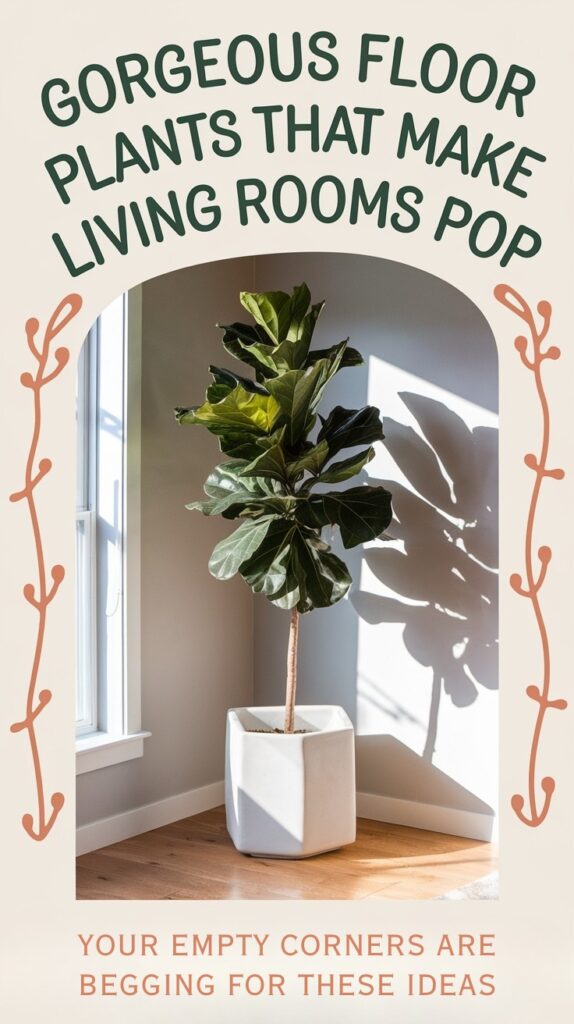
Contents
- 1 Create a Tropical Paradise With Oversized Palms
- 2 Design a Stylish Statement Corner With Fiddle Leaf Figs
- 3 Layer Different Heights With Snake Plants and Birds of Paradise
- 4 Incorporate Natural Room Dividers Using Tall Bamboo
- 5 Mix Textures With Monstera and Rubber Plants
- 6 Frame Seating Areas With Potted Trees
- 7 Build a Living Wall Effect With Climbing Plants
- 8 Add Drama With Large-Scale Floor Planters
- 9 Balance Modern and Natural With Architectural Plants
- 10 Master the Art of Plant Grouping Compositions
Create a Tropical Paradise With Oversized Palms
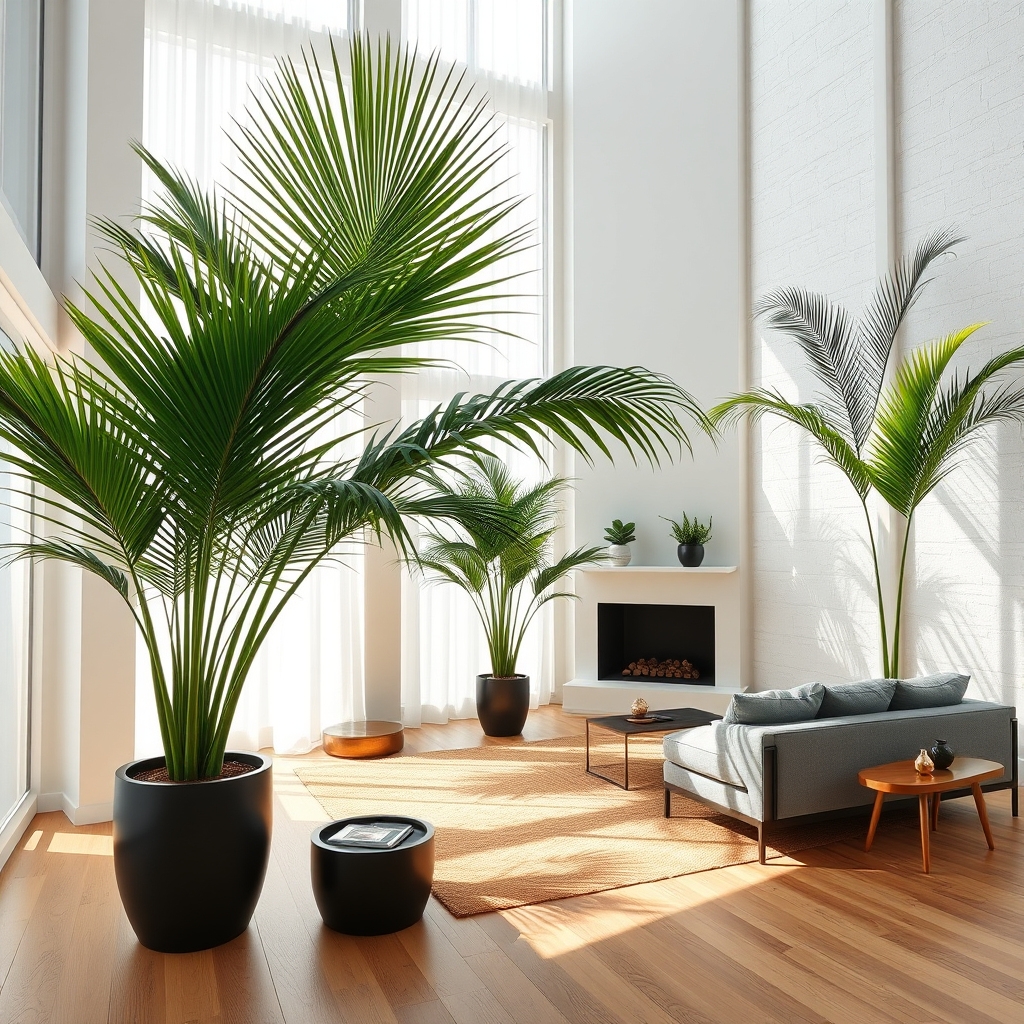
Oversized palm plants transform living rooms into lush, tropical retreats with their dramatic fronds and commanding presence.
These statement-making floor plants typically reach heights of 6-12 feet indoors, featuring wide, fan-shaped or feathered leaves that arch gracefully from sturdy trunks.
Popular varieties like Kentia Palm, Majesty Palm, and Lady Palm create instant focal points while adding vertical interest to room corners and bare walls.
Their large scale makes them particularly effective in spaces with high ceilings or expansive floor plans, where smaller plants might get lost.
The varied textures and deep green colors of palm fronds cast intricate shadows and create a natural canopy effect, evoking the feeling of an exotic getaway within the home.
Design a Stylish Statement Corner With Fiddle Leaf Figs
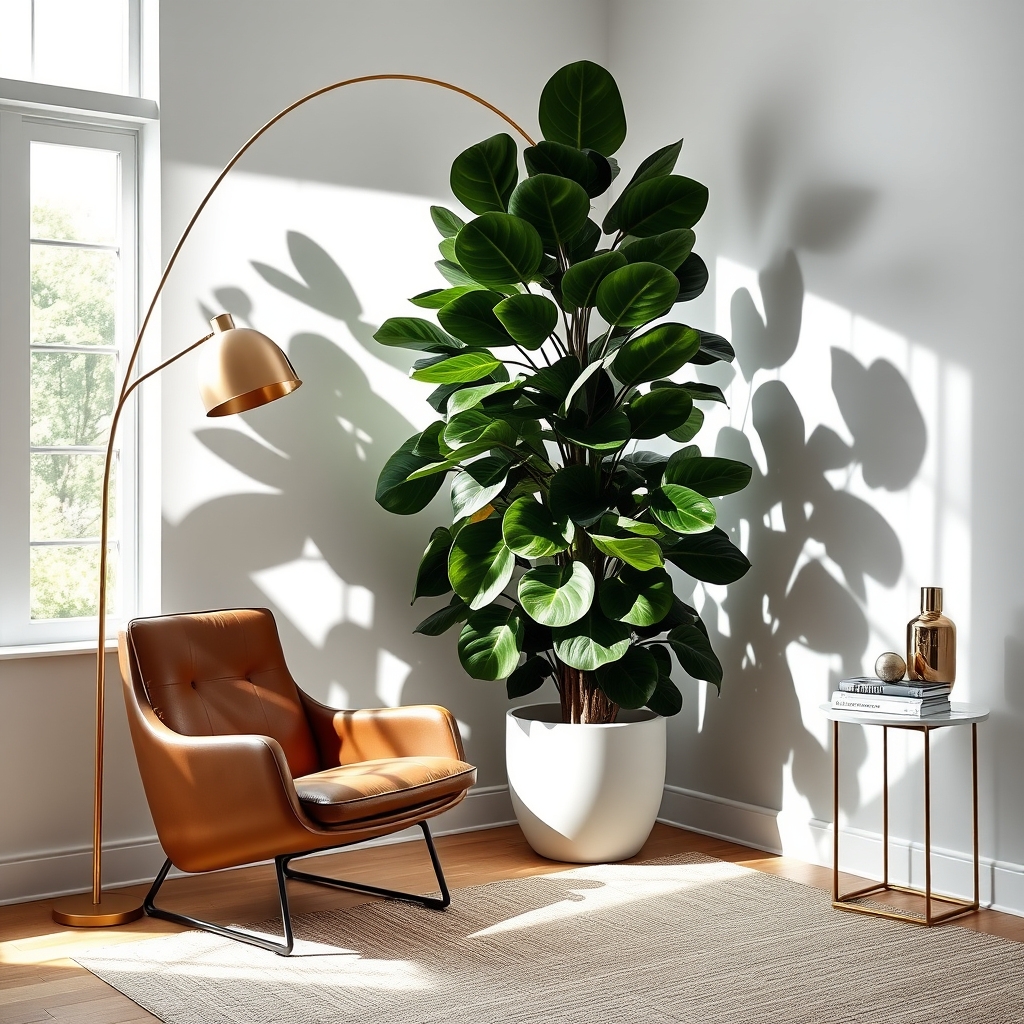
Fiddle leaf figs create a dramatic focal point in living room corners with their large, violin-shaped leaves and striking vertical growth pattern.
These statement plants typically reach heights of 6-10 feet indoors, featuring glossy dark green foliage that branches upward from a single trunk.
When positioned in a corner, fiddle leaf figs add architectural interest and create a lush, upscale aesthetic.
The plant’s bold silhouette pairs well with modern furnishings, decorative pots, and accent lighting to establish an eye-catching design vignette.
Strategic placement near windows allows the plant to thrive while maximizing its visual impact in the room’s overall composition.
Layer Different Heights With Snake Plants and Birds of Paradise
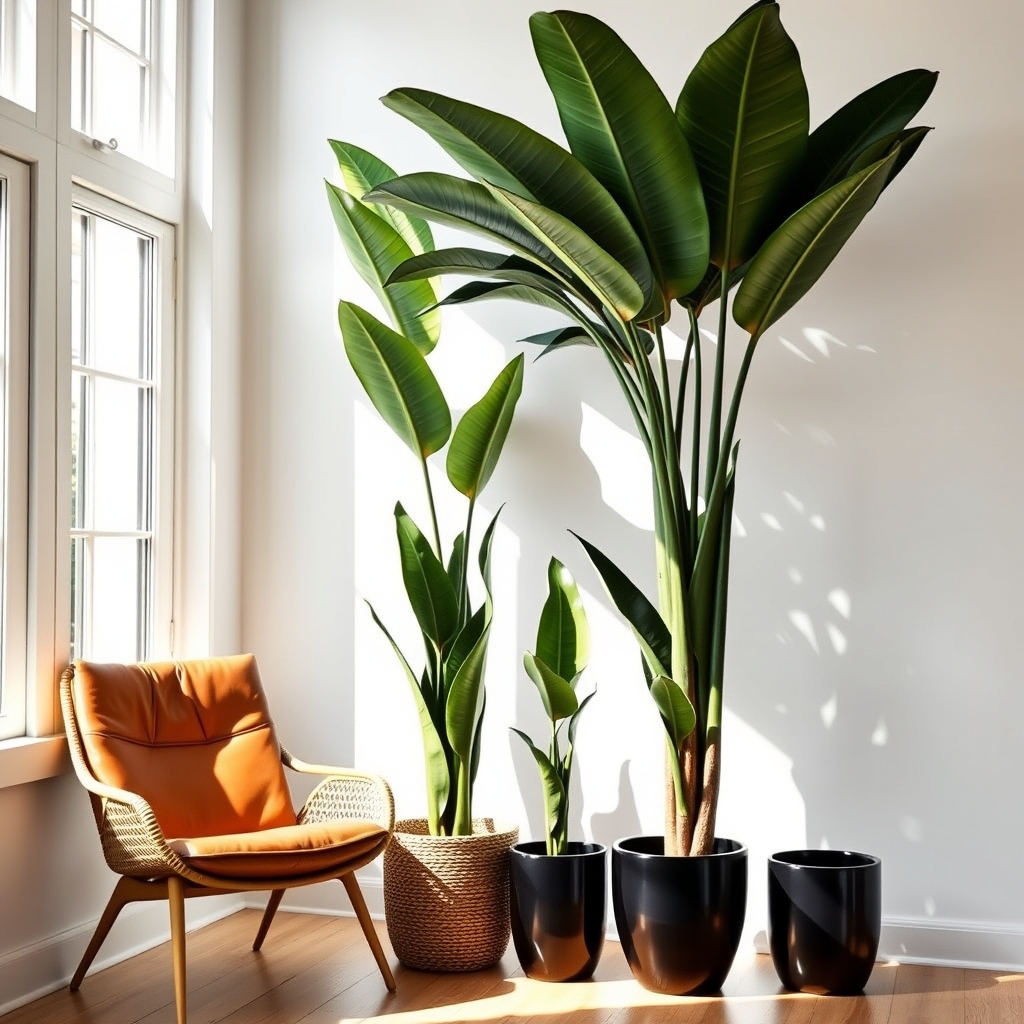
Snake Plants and Birds of Paradise create striking visual layers in living room spaces through their distinctly different heights and growth patterns.
Snake Plants feature rigid, upright leaves growing 2-4 feet tall in elegant vertical lines, while Birds of Paradise can reach dramatic heights of 6-8 feet with large, paddle-shaped leaves fanning outward.
When grouped together, these plants naturally form an eye-catching arrangement – Snake Plants provide a strong middle layer while Birds of Paradise tower above, creating depth and dimension.
The contrast between the Snake Plant’s sharp, architectural form and the Bird of Paradise’s sweeping tropical canopy makes this pairing particularly effective for adding visual interest to room corners or creating natural dividers in open floor plans.
Incorporate Natural Room Dividers Using Tall Bamboo

Tall bamboo plants serve as elegant living room dividers, creating natural separation between spaces while maintaining an open, airy feel. These fast-growing plants feature long, slender stalks that can reach heights of 6-10 feet indoors, with clusters of narrow leaves creating gentle visual barriers.
The bamboo’s vertical growth pattern naturally draws the eye upward, making rooms appear taller while defining distinct areas without the heaviness of traditional walls or screens. The plant’s distinctive yellow-green stems and rustling foliage add both architectural interest and a zen-like atmosphere to the living space.
Unique features:
- Natural screening effect without blocking light
- Vertical growth maximizes space efficiency
- Low maintenance requirements
- Creates peaceful ambient sound when leaves move
- Can be arranged in linear or curved configurations
Mix Textures With Monstera and Rubber Plants
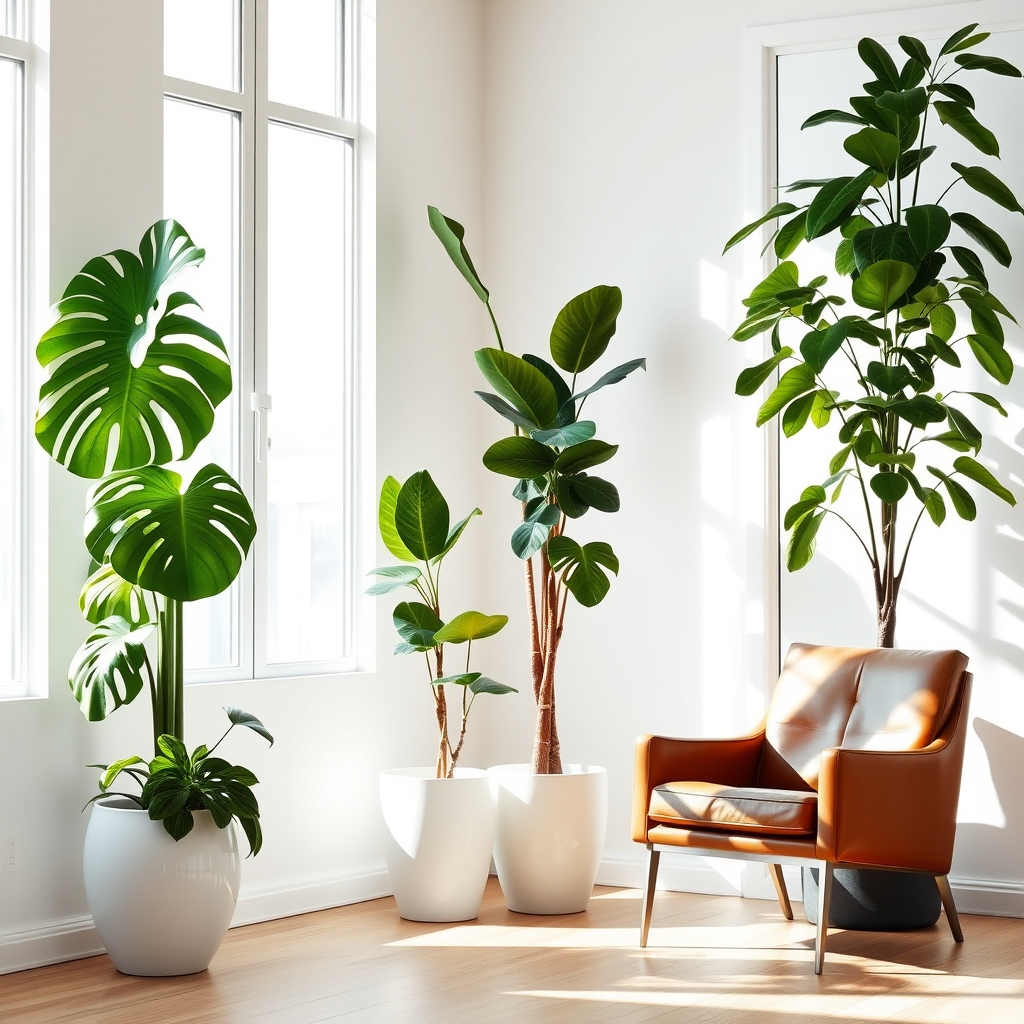
Mixing Monstera and Rubber Plants creates striking textural contrast in living room spaces.
Monstera deliciosa features large, glossy leaves with distinctive natural holes and splits, while Rubber Plants (Ficus elastica) display smooth, thick, leather-like foliage.
The Monstera’s wild, tropical appearance complements the Rubber Plant’s more structured, upright growth pattern. Together, they provide visual interest through their different leaf shapes, sizes, and surface qualities – from the Monstera’s perforated leaves to the Rubber Plant’s uniform, oval-shaped foliage.
Both plants can grow quite tall, making them ideal floor specimens that add varying heights and dimensional layers to room corners or empty wall spaces.
Frame Seating Areas With Potted Trees
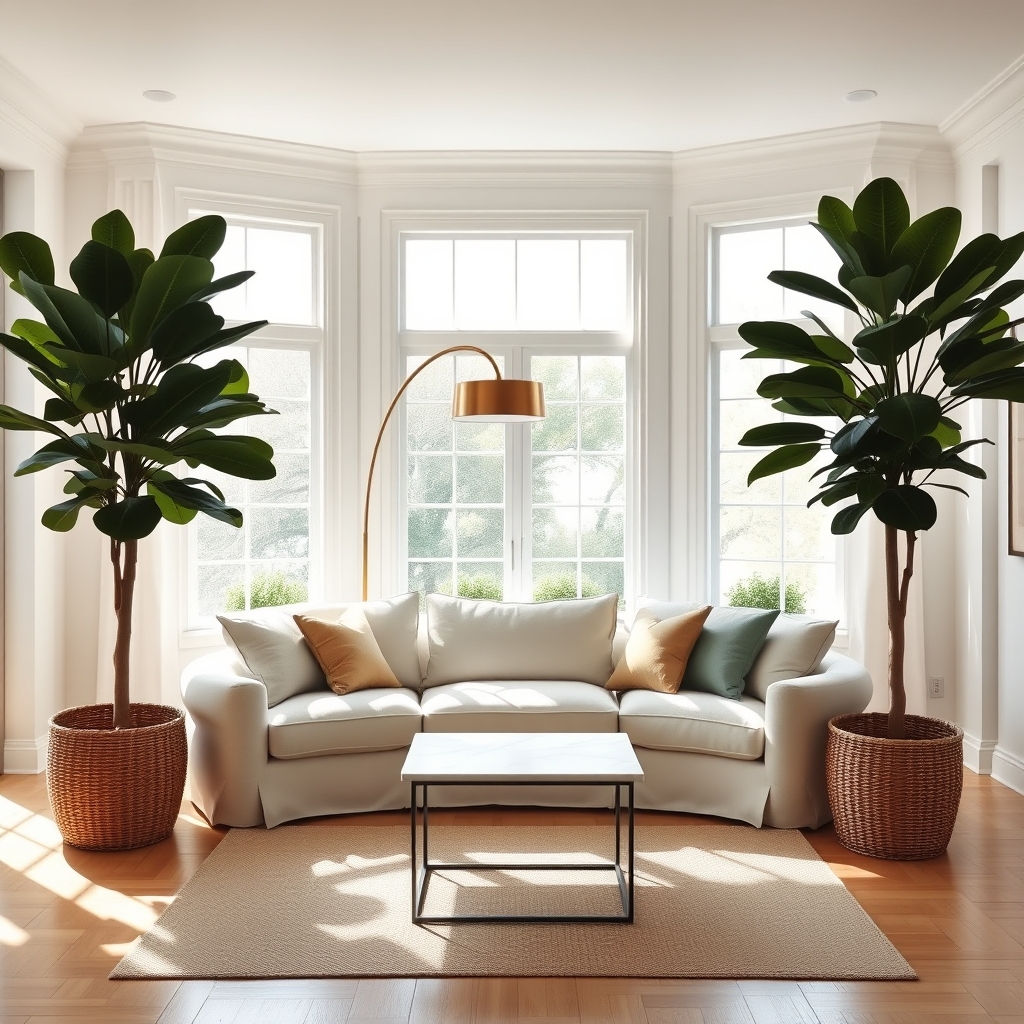
Framing seating areas with potted trees creates natural boundaries and adds vertical interest to living room spaces.
Tall floor plants like Fiddle Leaf Figs, Bird of Paradise, or indoor palms positioned at the corners or sides of sofas and chairs establish an intimate conversation zone while maintaining an open feel.
The trees’ height draws the eye upward, making the room appear larger, while their leafy canopies provide a soft, organic backdrop for furniture groupings.
This arrangement combines both form and function, using plants as architectural elements to define spaces without the need for solid room dividers or walls.
Build a Living Wall Effect With Climbing Plants
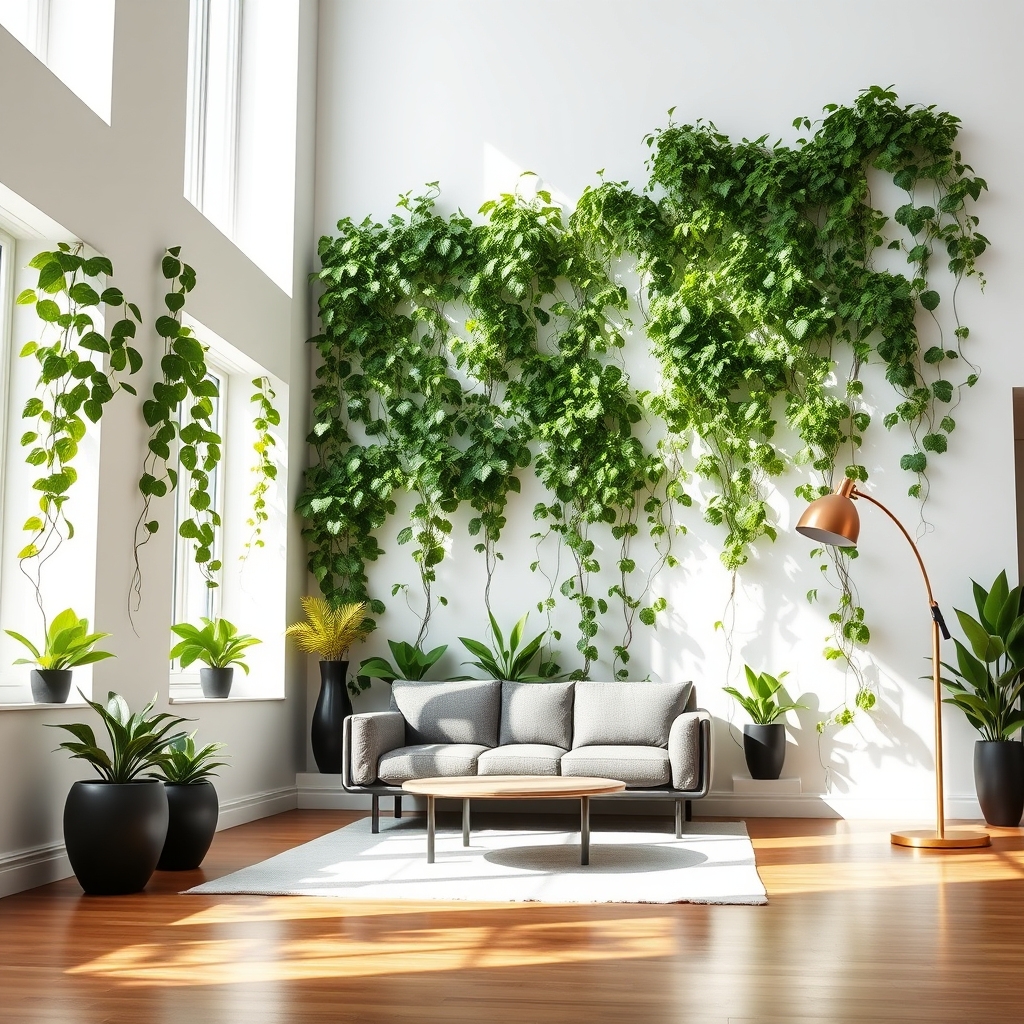
Building a living wall effect with climbing plants transforms vertical space into a lush, green feature by training vines and climbers to grow upward along walls, trellises, or mesh supports.
The plants create a natural tapestry that can extend from floor to ceiling, with foliage cascading or growing in organized patterns. This design approach uniquely combines architectural elements with nature, turning plain walls into dynamic, living surfaces that add depth and organic texture to living room spaces.
Climbing plants like pothos, ivy, or philodendron are typically planted in floor containers at the base and gradually climb upward using their aerial roots or tendrils, requiring minimal floor space while making a dramatic visual impact.
Add Drama With Large-Scale Floor Planters
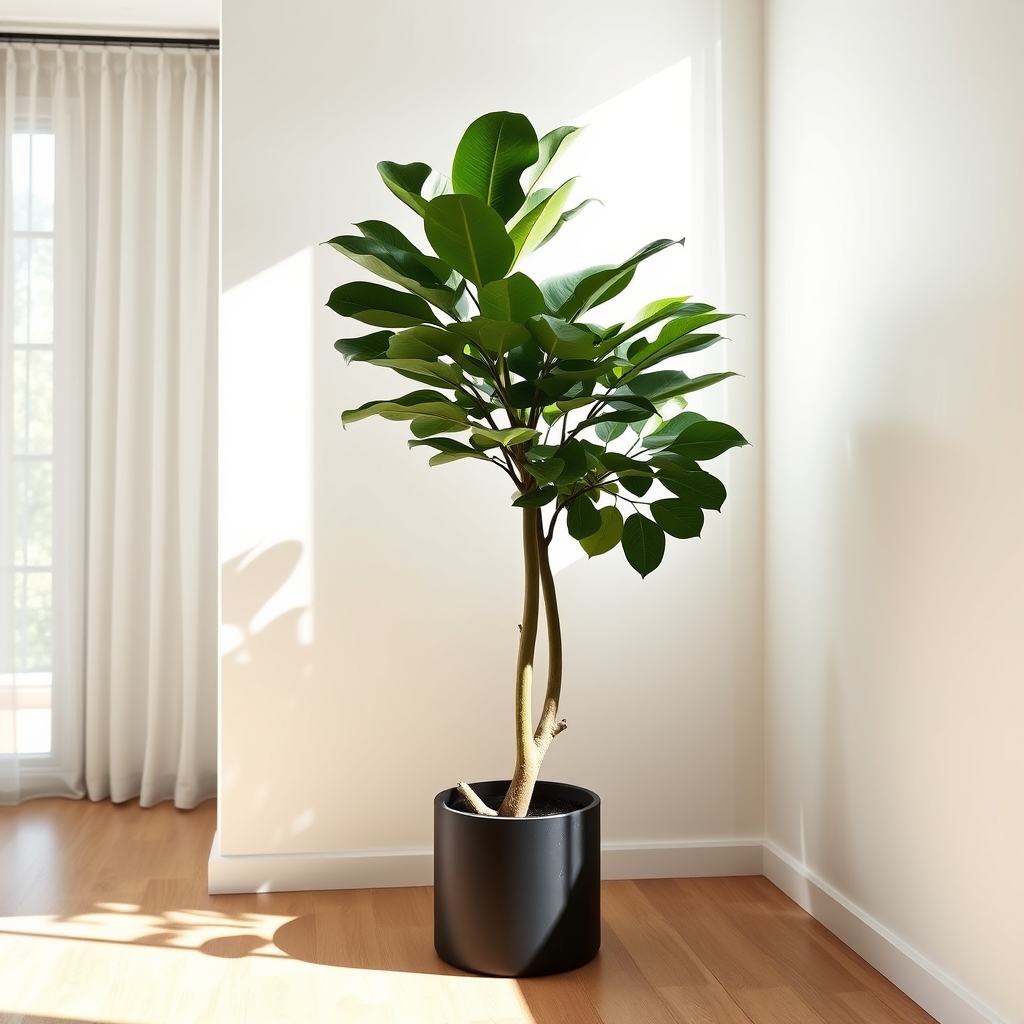
Large-scale floor planters create bold visual impact in living room spaces by elevating plants off the ground in dramatic vessels.
These substantial containers typically stand 2-4 feet tall and feature oversized proportions that command attention. The planters come in various materials like ceramic, metal, or concrete, often with sleek modern designs or textural finishes that serve as sculptural elements themselves.
Their height and scale allow for showcasing statement plants like fiddle leaf figs, bird of paradise, or tall palms at eye level, while the substantial size of the containers provides stability for larger specimens.
Strategically placed in corners, beside sofas, or as room dividers, these dramatic planters transform ordinary houseplants into living architectural features that anchor the room’s design.
Balance Modern and Natural With Architectural Plants
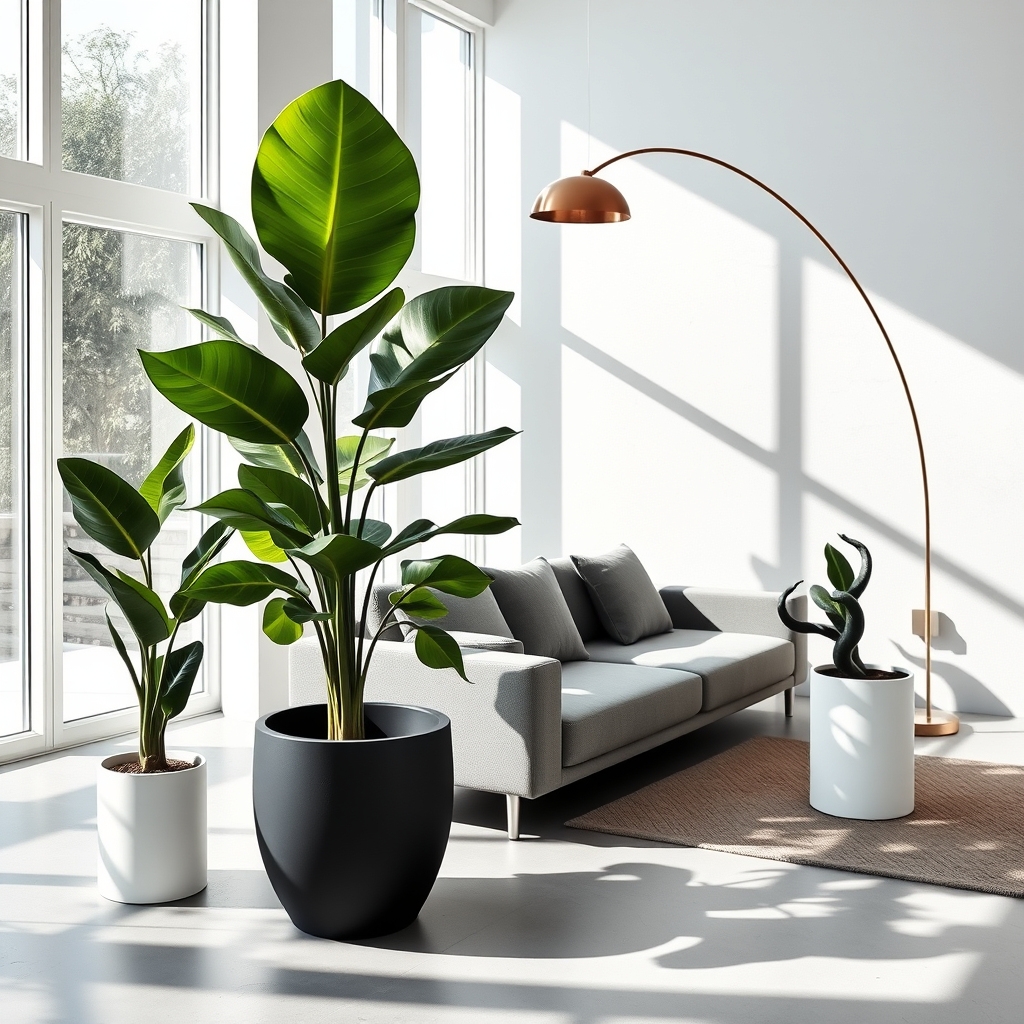
Architectural plants create a striking visual contrast in modern living spaces by combining sleek, geometric shapes with organic forms.
These statement-making plants typically feature strong vertical lines, dramatic angles, or symmetrical patterns, such as snake plants with their sword-like leaves or fiddle leaf figs with their bold, sculptural foliage.
When placed against minimalist furniture or clean-lined walls, these plants add natural elements while maintaining a contemporary aesthetic.
Their structured growth patterns and distinctive silhouettes function like living sculptures, helping to soften modern interiors without compromising the room’s sophisticated design elements.
Master the Art of Plant Grouping Compositions
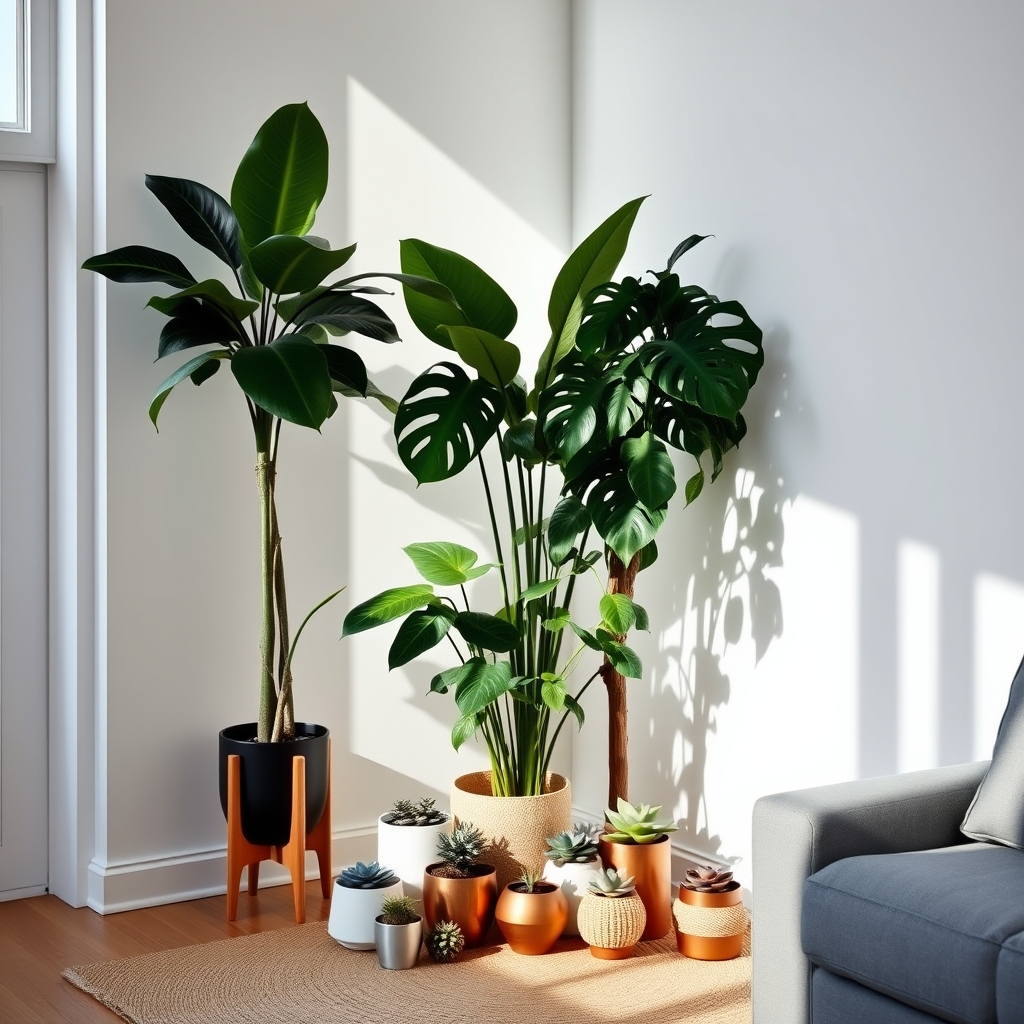
Plant grouping compositions transform living room spaces by arranging multiple plants of varying heights, textures, and shapes into cohesive displays. These arrangements typically feature taller plants as focal points, surrounded by medium and low-growing varieties to create visual layers.
The composition can include 3-5 plants positioned at different levels using plant stands, tables, or naturally varying plant heights.
Key features include:
- Strategic height variations (tall, medium, short)
- Contrasting leaf textures and shapes
- Complementary pot styles and colors
- Balanced spacing between plants
- Visual flow from one plant to another
Unique elements often incorporate:
- Mixed pot materials (ceramic, terra cotta, woven baskets)
- Varying plant categories (tropical, succulent, trailing)
- Natural or geometric grouping patterns
- Negative space between plants for visual breathing room
- Coordinated color schemes in both foliage and containers
